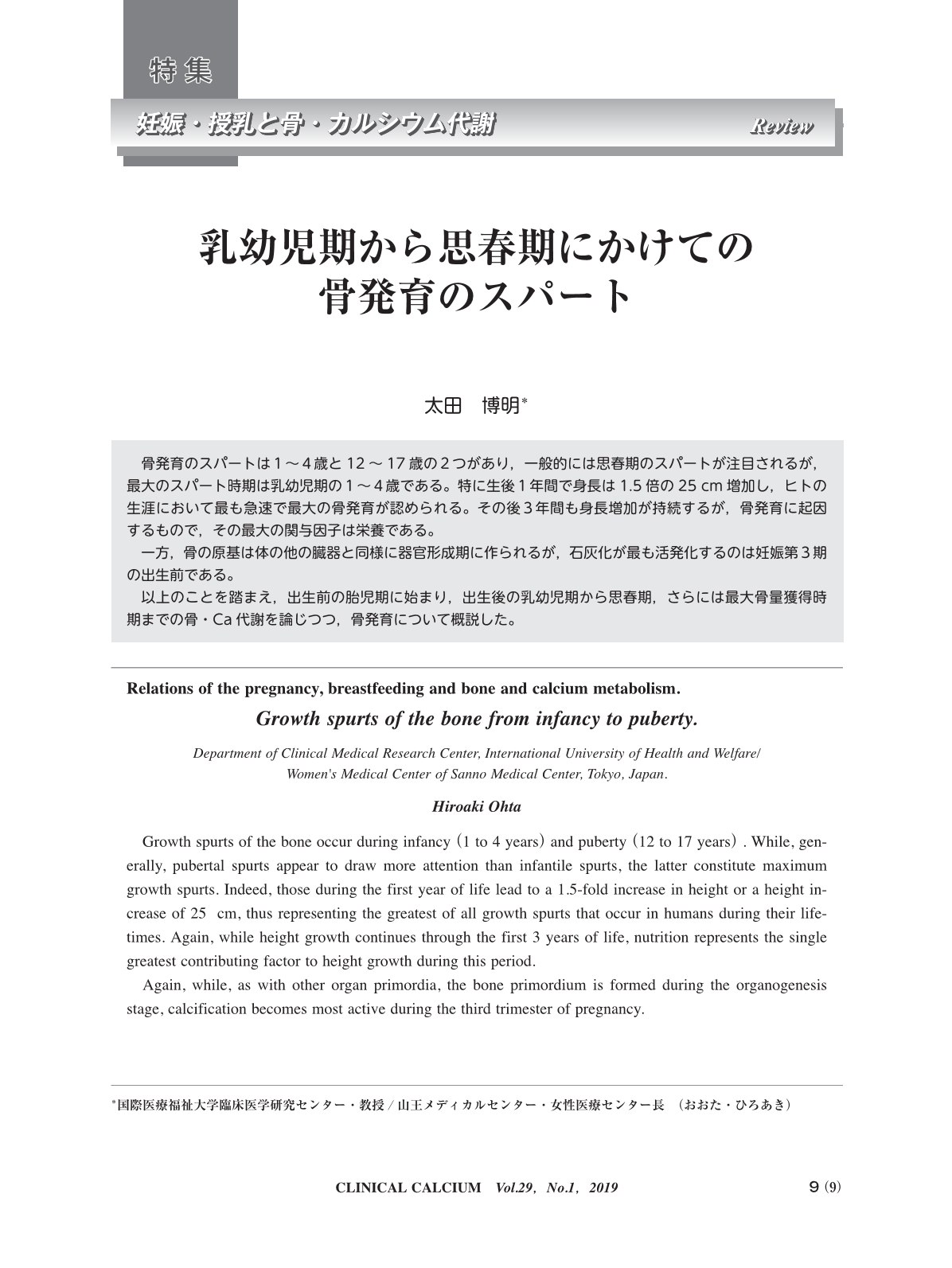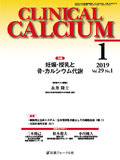Japanese
English
- 有料閲覧
- Abstract 文献概要
- 1ページ目 Look Inside
- 参考文献 Reference
骨発育のスパートは1~4歳と12~17歳の2つがあり,一般的には思春期のスパートが注目されるが,最大のスパート時期は乳幼児期の1~4歳である。特に生後1年間で身長は1.5倍の25 cm増加し,ヒトの生涯において最も急速で最大の骨発育が認められる。その後3年間も身長増加が持続するが,骨発育に起因するもので,その最大の関与因子は栄養である。 一方,骨の原基は体の他の臓器と同様に器官形成期に作られるが,石灰化が最も活発化するのは妊娠第3期の出生前である。 以上のことを踏まえ,出生前の胎児期に始まり,出生後の乳幼児期から思春期,さらには最大骨量獲得時期までの骨・Ca代謝を論じつつ,骨発育について概説した。
Growth spurts of the bone occur during infancy(1 to 4 years)and puberty(12 to 17 years). While, generally, pubertal spurts appear to draw more attention than infantile spurts, the latter constitute maximum growth spurts. Indeed, those during the first year of life lead to a 1.5-fold increase in height or a height increase of 25 cm, thus representing the greatest of all growth spurts that occur in humans during their lifetimes. Again, while height growth continues through the first 3 years of life, nutrition represents the single greatest contributing factor to height growth during this period. Again, while, as with other organ primordia, the bone primordium is formed during the organogenesis stage, calcification becomes most active during the third trimester of pregnancy. Thus, this review provides an overview of bone growth in humans, in relation to bone/calcium metabolism, which begins in the fetal stage before birth and continues through infancy and puberty, finally leading to attainment of peak bone mass in humans.



